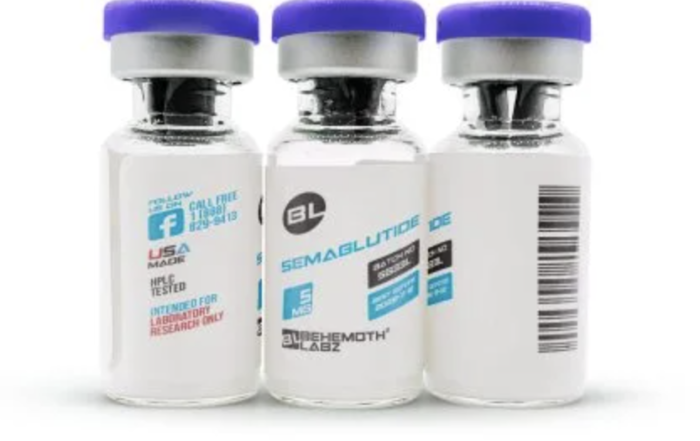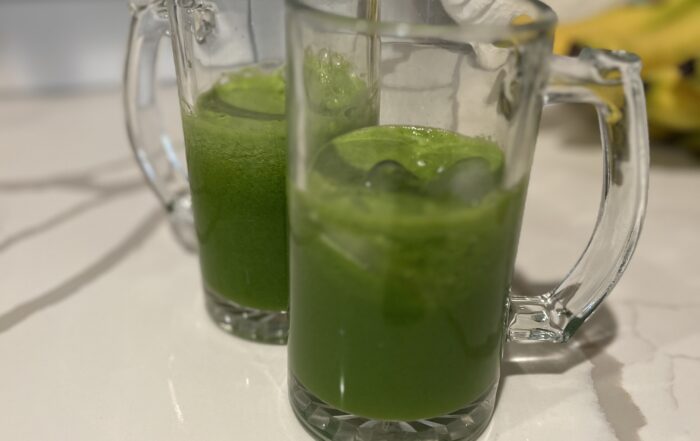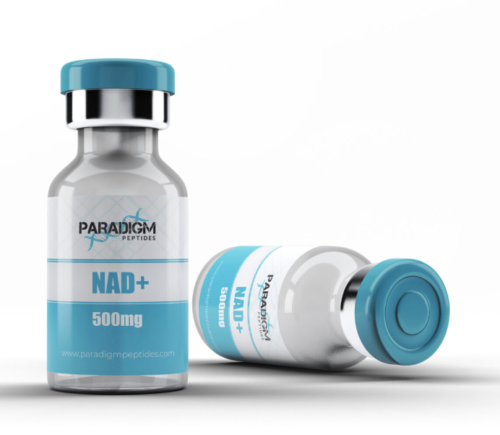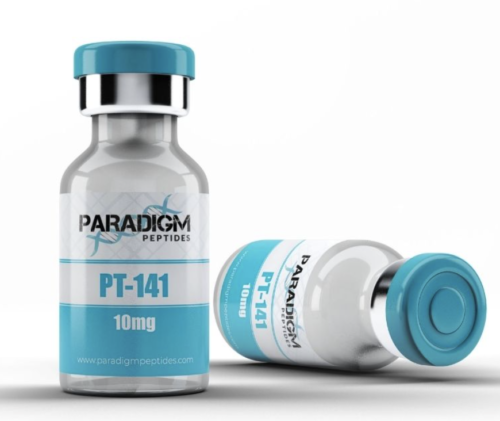Knee Pain
Welcome to our page dedicated to knee health and the exciting world of biohacks for pain relief and improvement. Knee pain can significantly impact our daily lives, hindering mobility and diminishing our overall well-being.
Whether you’re suffering from acute knee discomfort or dealing with chronic conditions such as arthritis or injuries, it’s crucial to explore effective strategies to alleviate pain and enhance the health of your knees. This is where biohacking comes into play.
Biohacking involves utilizing innovative techniques, lifestyle modifications, and alternative therapies to optimize our body’s natural processes and promote healing. By incorporating biohacks into your daily routine, you can potentially reduce knee pain, increase flexibility, strengthen the surrounding muscles, and support overall knee health.
In this comprehensive guide, we will delve into various biohacks that have shown promising results in managing knee pain and improving knee health. From targeted exercises and stretches to nutrition tips and alternative therapies, we will provide you with evidence-based information and practical advice to empower you on your journey towards healthier knees.
It’s important to note that everyone’s body is unique, and what works for one person may not work for another. Therefore, we recommend consulting with healthcare professionals before implementing any new strategies to ensure they are suitable for your specific needs and condition.
Get ready to explore the world of biohacking and discover effective ways to improve your knee health, alleviate pain, and regain your mobility. Together, let’s unlock the potential of biohacks and embark on a journey towards stronger and happier knees.
How to Fix Knee Pain
Many of the remedies that individuals believe can relieve knee pain are either unsupported by science or have been proven to be false.
The most common cause of knee pain, unless you’ve injured it in an accident, is overuse—doing too much work followed by too little recovery time.
Resting until your knee is fully pain-free is the only effective approach to treat the majority of knee discomfort, though there are seven more techniques you can try.
What Causes Knee Pain
Understanding the fundamental structure of the knee joint is necessary before we can discuss what causes knee discomfort.
The knee’s function is to maintain femur stability while allowing the lower leg to flex.
The knee only moves in one plane because it is one of the best examples of a hinge joint in the body (forward and backward).
The main structures of the knee include:
- The femur (thigh bone)
- The tibia (shin bone)
- The patella (kneecap)
- The patellar tendon
- The medial meniscus
Between tendons and bones, there are also a number of ligaments, smaller tendons, and bursa, which are sacs filled with fluid. Synovial fluid, a goo that has the consistency of egg whites and lubricates the cartilage in joints, surrounds the entire joint.
The iliotibial band, a sizable length of connective tissue that extends down the side of each leg and across the knee, and the muscles of the upper leg (the quadriceps and hamstrings), among other structures, also have an impact on the knee.
There are seven things you may do to generally lessen knee pain. Although none of them are certain remedies, they are your best alternatives.
The first method is by far the most trustworthy. The remaining six then fit into the “throw it at the wall and see what sticks” category. There is no harm in trying them out because they could either help or injure.
You probably have a repetitive strain injury if your knee suffers when you do particular exercises and you haven’t recently had a serious injury (RSI).
We must first examine what occurs to your body while you workout in order to comprehend why.
The tissues in your muscles, tendons, and joints suffer minor harm when you lift weights. Your body makes the most possible repairs between workouts, and if you give yourself the time to heal, these tissues develop stronger and more resilient over time.
But occasionally, this damage accumulates more quickly than your body can repair it, and pain occurs.
As was previously said, the largest error people make when dealing with repetitive stress injuries is ignoring the early warning signs and continuing their regular exercise regimen. Even if the pain occasionally goes away on its own, you’re usually only making matters worse for yourself.
On account of this, a small, gnawing pain might develop into a serious injury that requires months to heal.
Fortunately, there is an easy fix: rest.
Your body shouldn’t have any trouble healing itself if all you have is an RSI and you’re otherwise healthy.
The irritating thing is that it may take a while for some injuries to heal, necessitating weeks or even months away from the activities that led to the injury.
One of the most frustrating kind of damage is a torn tendon since it usually takes a lot longer for it to recover than other types of damage.
The good news is that you don’t need to completely stop exercising. According to studies, active rest, which involves doing modest exercise while avoiding anything painful, can hasten the healing process.
Hence, generally speaking, moving your knee as much as you can without feeling discomfort is the greatest strategy to alleviate knee pain.
You can tackle this in one of two ways:
- Stop lifting weights right away, and start walking or engaging in other activities that won’t aggravate your knee.
- Change your lifting strategy to account for your knee pain.
Each strategy has benefits and drawbacks.
If you choose the first course of action, there is nearly little chance that your knee discomfort will worsen, but you must also cease doing any sort of weightlifting.
This is a better alternative if your knee pain has been present for some time or is severe. Picking a different exercise, such as walking, cycling, rowing, hiking, or swimming, and starting to do that for at least 30 minutes a day is the easiest method to practice active rest.
The second choice allows you to keep going to the gym while possibly taking longer to heal.
If your knee doesn’t hurt much, hasn’t been hurting for long, or only hurts when you do certain exercises, this might be the better option.
Let’s say that when you squat, your knee hurts. Here’s how you could change your strategy:
Employ a variety of pain-free squat variations, such as split squats, front squats, high-bar squats, and pause squats.
Put an end to all squat-related workouts.
Any lower body exercises should be stopped.
Up till you feel better, stop lifting.
Before we continue, it’s important to note that some individuals will advise you to quit exercising if you experience any pain while exercising.
That’s a safe assumption, but it’s also true that knee discomfort can persist for a very long time after the physical injury has healed.
In the end, you’ll have to make the decision on when to start lifting again, but as a general guideline:
Give yourself additional time to heal before you resume exercising if the discomfort is severe, ongoing, and worsens with specific lifts.
You can likely resume exercising without having to worry about exacerbating the discomfort if it is mild, sporadic, and doesn’t seem to worsen during certain workouts.
How well you can move a joint across its normal range of motion is referred to as mobility.
When it comes to the knee, this means being able to perform exercises like the squat, lunge, and deadlift without experiencing any tightness in your lower leg.
Stretching doesn’t seem to do much to prevent or lessen knee discomfort, as we discussed before, but it won’t hurt and many people find that it makes them feel better temporarily.
Also, if you lack the mobility to perform lower body workouts correctly, you may be putting yourself at risk for an overuse injury (theoretically, at least).
The majority of knee mobility exercises involve using easy stretches or equipment like lacrosse balls, foam rollers, and elastic bands to roll out and stretch your quadriceps, hamstrings, and iliotibial band muscles.
Although injuries from weightlifting are less frequent than most people believe, they frequently occur as a result of improper technique.
The heavy half-repping that discredits the large compound exercises like the squat, deadlift, bench press, and military press is only one example of form faults. Even if you employ a full range of motion and the right amount of weight, you still run the danger of getting hurt.
Going heavy can really injure your knees if you allow them to bend inward as you squat or if you stretch them past your toes.
You’re asking for a lower-back injury if you round your back during a deadlift or hyperextend it excessively at the top.
You will likely experience shoulder and elbow issues if you flatten your back, round your shoulders, or flare your elbows out excessively when performing bench presses.
These minor irregularities are present in most exercises, so you should take the time to master good form for each one and make an effort to use it consistently.
Several folks start their workouts with a few minutes of static stretching.
This is not the best course of action.
Due to the cellular damage it causes to muscles and its analgesic effect, static stretching before exercise has been found to reduce speed and strength, as well as fail to prevent injury and possibly increase risk of injury.
A good warm-up routine should promote blood flow to the muscles being trained as well as flexibility, body warmth, and free, coordinated movement.
Repetitive action of the muscles through their predicted ranges of motion is the best method for doing this, which does lower the risk of injury.
For this reason, it’s better to stick to a straightforward, condensed warm-up regimen with multiple sets, like the one described in the books Bigger Leaner Stronger and Thinner Leaner Stronger:
First Warm-Up Set
8 reps with 50% of your working set weight
Rest 1 minute
Second Warm-Up Set
6 reps with 50% of your working set weight
Rest 1 minute
Third Warm-Up Set
4 reps with 70% of your working set weight
Rest 1 minute
Fourth Warm-Up Set
1 rep with 90% of your working set weight
Rest 2 minutes and then start your workout
You’ll probably discover that by following this warm-up regimen, you can lift more weight while keeping good form, which can greatly lower your chance of injury.
In order to keep their joints warm when working out their lower body, many people also like to wear knee sleeves. They won’t lessen your chance of suffering a knee injury, but they won’t hurt either.
If you wish to give SBD and Rehband a try, they both produce quality ones.
Massage is one of the safest, least invasive things you can do to reduce knee pain.
There isn’t much evidence for or against it, but many people find it helps reduce pain at least for a while.
A good way to do this at home is with a foam roller.
Getting the right nutrition
Supplements won’t make a difference in how quickly your knee pain goes away compared to active rest and adhering to a healthy exercise regimen.
Supplements cannot treat wounds. Correct exercise, a balanced diet, and adequate (but not excessive) rest all help.
A number of the most well-known joint pain remedies, like glucosamine chondroitin, have also been completely disproven.
But, there are a few natural, safe products that research suggests might be able to prevent and lessen knee discomfort.
Let’s evaluate the supplements that are most likely to be beneficial immediately.
Taking fish oil may be beneficial in situations when inflammation is the source of knee discomfort because it is known to be anti-inflammatory.
Eicosapentaenoic acid (EPA) and docosahexaenoic acid (DHA), the two primary components of fish oil, increase the body’s ability to produce anti-inflammatory substances.
You could not reap the benefits of taking a fish oil supplement if you regularly consume multiple meals of fatty fish like cod, mackerel, sardines, and salmon. However, if you don’t, you should add it to your daily supplement routine.
Also you should check out Triton if you’re seeking for a high-quality fish oil.
It is a high-potency, 100% triglyceride fish oil that also contains natural lemon oil to stop unpleasant “fish oil burps” and vitamin E to prevent oxidation and rancidity.
Additionally, it is molecularly distilled to remove pollutants and poisons from deep-water anchovies and sardines that were caught sustainably.
Hence, if you want to lower the risk of disease and dysfunction, such as knee discomfort, and improve your physical and mental health and performance, try Triton right away.
According to studies, taking supplements of curcumin and black pepper extract lowers inflammatory signals in the joints, reduces pain and stiffness in people with arthritis, and increases mobility.
The doses of curcumin that are clinically efficacious when combined with piperine fall between 200 and 500 mg.
Because of this, FORTIFY, our joint supplement, contains 500 mg of curcumin and 25 mg of piperine each serving.
FORTIFY contains a clinically effective dose of curcumin in every serving along with three other ingredients also proven to enhance joint health and function:
- Undenatured type ll collagen
- Boswellia serrata
- Grape seed extract
Collagen acts as the basic building block for many things in your body, including your skin, teeth, cartilage, bones, and tendons. Collagen is the main component of your body’s connective tissues.
While there are over 37 different types of collagen in animals, they can be categorized into two main groups, and the collagen used in supplements comes from the connective tissue of animals like cows, chickens, and fish.
The most prevalent type of collagen in the human body, type I collagen is found in scar tissue, tendons, ligaments, skin, bones, and other tissues.
The collagen that maintains joint function and shields them from harm is type II collagen.
Arthritis is a disorder in which your immune system may occasionally start destroying your own cartilage.
The immune system can be “taught” to cease attacking the proteins in joint cartilage by type II collagen, according to studies, which can greatly improve joint health and function and lessen or even completely remove pain and swelling.
With type II collagen supplements, your body can recognize its own joint collagen as a safe material, turning off the autoimmune response. This way, they act as a kind of natural vaccine.
The best thing about type II collagen supplements is that both persons with healthy joints and those with arthritic issues have seen these results.
For enhancing joint health, a daily intake of 10 to 40 milligrams of collagen is clinically useful.
The reason for the wide range of dosages is that studies have demonstrated advantages with a variety of doses, and it is unclear whether utilizing higher doses will be more beneficial. Research unmistakably demonstrates that 10 milligrams are efficient, but does not prove that two, three, or four times that quantity are always superior.
For this reason, each serving of Fortify contains 10 milligrams of undenatured type ll collagen, a clinically efficacious dosage.
Another substance obtained from the bark of the maritime pine tree, or Pinus maritima, is pycnogenol.
It acts similarly to white willow bark by lowering the body’s synthesis of inflammatory substances, and it likewise consistently seems to lessen joint discomfort.
Pycnogenol should be taken in doses of 100 to 200 mg daily to achieve therapeutic efficacy.
As pycnogenol has the drawback of being costly, most supplements substitute grape seed extract, a substance that is chemically identical. Procyanidins, chains of antioxidants that are present in various plants, are present in both of these molecules. Even though they don’t perfectly match, grape seed extract probably has many of the same advantages.
Fortify contains 90 mg of grape seed extract per serving because the recommended daily intake for grapeseed extract is 75 to 300 mg.
Ayurveda medicine has employed the fragrant compound frankinsence, which is produced by the Boswellia serrata plant, for thousands of years to treat a variety of inflammatory diseases.
Modern science has helped us to understand why.
Boswellic acids are chemicals found in frankincense. Boswellic acids, including one in particular known as acetyl-keto-beta-boswellic acid, or AKBA, have been shown in studies to suppress the formation of numerous proteins that lead to inflammation in the body, similar to curcumin.
In case you were wondering, the anti-inflammatory effects of curcumin and boswellic acids are distinct since they target different enzymes. Cyclooxygenase, also known as COX, is inhibited by curcumin, and lysyl oxidase, often known as LOX, is inhibited by boswellic acids (and, most notably, 5-LOX).
Studies demonstrate that Boswellia serrata is an excellent treatment for lowering joint inflammation and pain as well as preventing the autoimmune response that eats away at joint cartilage and finally develops arthritis because these anti-inflammatory effects reach to the joints.
Boswellia serrata dosages between 100 and 200 milligrams are therapeutically beneficial.
This is why there is 150 mg of Boswellia serrata in each serving of Fortify.
White willow bark is related to aspirin, which has been used for thousands of years to lessen pain and inflammation. Aspirin is a synthetic version of a molecule that is also present in willow.
It functions similarly to other NSAIDs in that it prevents the body from producing inflammatory chemicals.
A daily dose of 240 mg of white willow bark has been shown to be therapeutically helpful.











